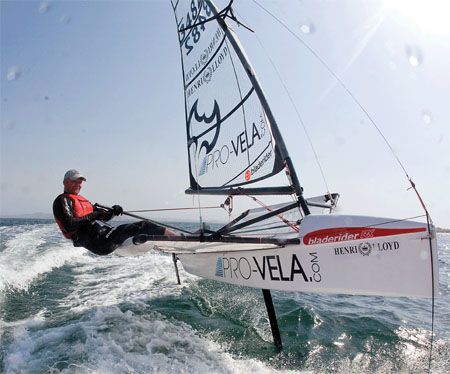A hydrofoil is like a wing. It runs immersed in water, like a wing in air, with the objective of generating 'lift'. The lift may be required in the vertical direction, with the wing or foil running horizontally, as in aeroplanes, gliders or hydrofoil craft. Alternatively, the wing or foil may be turned through a right angle, to run vertically. The 'lift' is then generated as a side force to counteract the side force of the sails, as in centreboards, keels and rudders.
As a third option the foil may be set at 45°, piercing the water surface and generating lift and side force simultaneously. There is then a component of the lift force acting vertically, to sustain flight, and a component acting horizontally to combat the side force of the sails. (The latest interpretation of this is, of course, the curved foil, which is becoming increasingly common on A-Class and other small multihulls, as well as on giants like America's Cup winner USA 17).
The 'lift' is thus the 'good guy' of the situation, sustaining the craft or aeroplane in flight...
To read on simply SIGN up NOW
Take advantage of our very best subscription offer or order a single copy of the November 2011 issue of Seahorse
Online at:
www.seahorse.co.uk/shop/index.php
Or for iPad simply download the Seahorse App at the iTunes store



